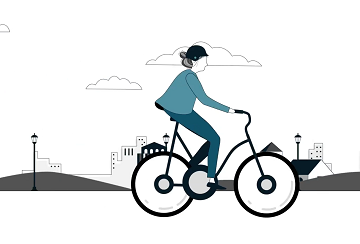The Fragile Truth about Fragility Fractures
You may not have heard of fragility fractures, but there’s a chance you’ve heard of osteoporosis – a condition that causes your bones to be more brittle. The two actually go hand in hand, as fragility fractures are a common consequence of osteoporosis, and can have serious implications.
Don’t be mistaken: Fragility fractures are distinct from traumatic fractures, which harm even the healthiest of bones. Traumatic fractures occur when a person is in an auto accident or falls down hard while skiing or snowboarding. They involve a sense of force, or even, as the name suggests, trauma.
Fragility fractures, on the other hand, can occur from something as simple as falling from a standing height or a sudden cough or sneeze. For someone with osteoporosis, daily tasks such as walking or household chores can result in a cracked rib.
It’s Not Only the Fall That Hurts
 According to Osteoporosis Canada, 28 percent of women and 37 percent of men who fracture a hip will die during the following year. That statistic may seem shocking, but think about it: 40% of people who suffer a hip fracture become unable to walk independently, and 60% of those who suffer a hip fracture require assistance walking just a year later.
According to Osteoporosis Canada, 28 percent of women and 37 percent of men who fracture a hip will die during the following year. That statistic may seem shocking, but think about it: 40% of people who suffer a hip fracture become unable to walk independently, and 60% of those who suffer a hip fracture require assistance walking just a year later.
This can have a significant impact and burden on families and loved ones since one third of people with hip fractures may lose their independence or end up in a nursing home. The inability to stand or walk can affect one’s day-to-day life and also their mental well-being, not to mention the lives of those around them. Less than half of those who survive the hip fracture or related medical issues after the first year regain their previous level of function.
Much Ado About Something
Osteoporosis makes people more vulnerable to fractures by literally hollowing out their bones, leaving the remaining structures much more fragile and prone to breakage. Under a microscope, bones look a little like honeycombs. In people with osteoporosis, the gaps between each honeycomb “cell” grow larger, which makes bones brittle and easy to break.
Women over 50 and men over 65 are the most vulnerable to osteoporosis-related breaks. Whether you’ve broken a bone recently or not, you should consult your doctor and ask about having a 10-year fracture risk assessment.
Your doctor can also order a bone density test, which uses a device called dual-energy x-ray absorptiometry, or DEXA scan, to determine if you have the disease. Your doctor can then prescribe a course of treatment, which may involve changes to diet and exercise, and possibly medication.
Don’t wait until you have a nasty fall—getting screened early for osteoporosis may be, quite literally, a life-and-death decision. Having osteoporosis is like walking on thin ice, but you just might be the one who breaks. Talk to your doctor, who can help assess your risk for fracture and osteoporosis. If you are concerned about your bone health, you are not alone.
Click here for some fall prevention design tips for your home.


